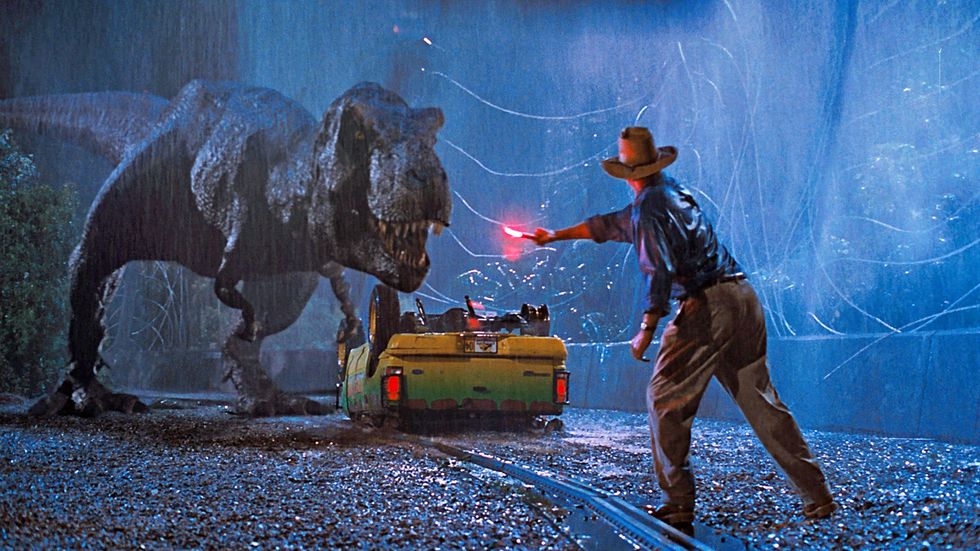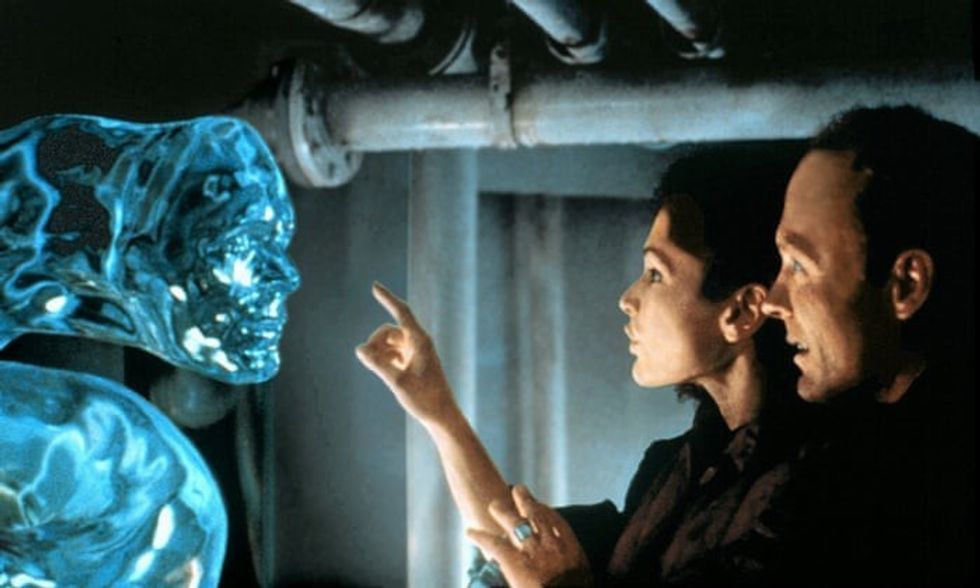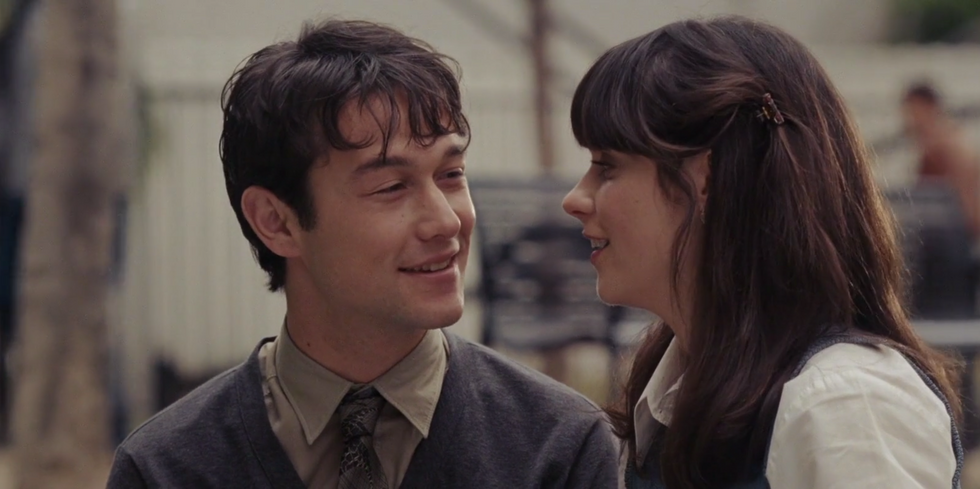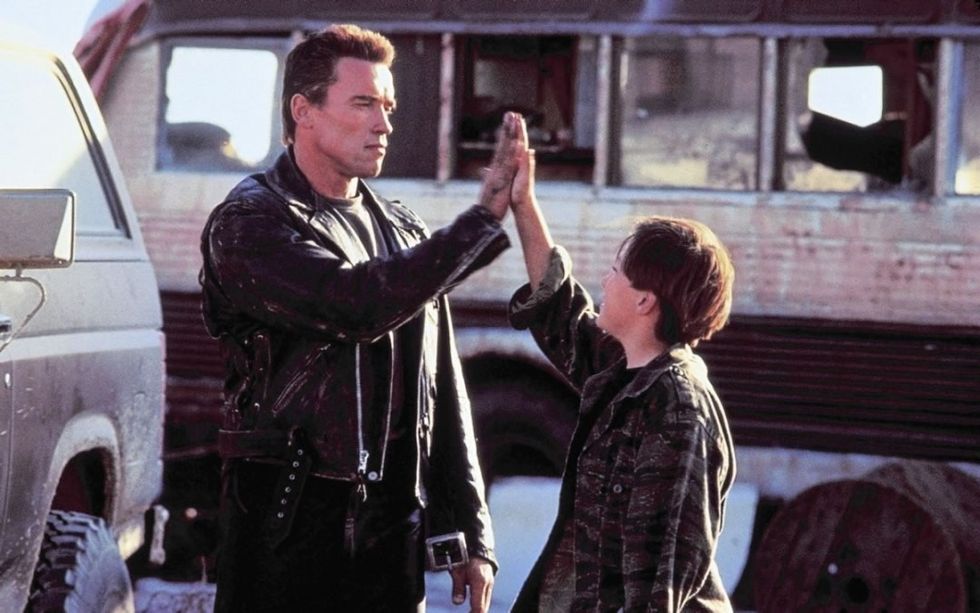'They Came at Night' Filmmakers Discuss Enacting Change Through Film

While many of us chase our own tails pursuing a career in filmmaking for own our immediate benefit, others are focussing on harnessing media to stop wars. They Came at Night is a film that was not made for you; it was made to be screened locally in central Africa to encourage communities to peacefully accept defectors from the Lord's Resistance Army, led by Joseph Kony. Click through to watch the film and to hear from project creator Lindsay Branham and co-director Alex Mallis as they talk about shooting the narrative film with local non-actors.
First, here's the 19 minute film, as well as lists of gear used and crew members:
Technical Details:
- The film was shot in 2 weeks with local non-actors
- Sony FS700
- Canon Lenses w/ Metabones Speed Adapter
- Steadicam
- One 1×1 Litepanel (only used in a couple shots)
- Tascam DR-60
- Sennheiser Mics
- Boom
- Bounce cards
Crew (on any given location):
- Producer/Do All: Lindsay Branham
- DP/Director/Camera Operator: Andrew Ellis
- Co-Director: Alex Mallis
- 2x Translators
- Art Director: Gabi Arp
NFS: How did you get involved with the idea of Mobile Cinema?
Lindsay: Three years ago I was working in eastern DR Congo -- working a lot with child soldiers at that point of reintegration where they leave the armed group and to try return back to their communities, and ultimately to a normal life. In an interview I was conducting with a former child soldier, he said: "If other kids knew what I had been through, then they would accept me." That was the moment when I started asking, "What could his story accomplish if it started and ended full circle within the community itself?" And so the idea of creating localized media as a conflict resolution, stigma reduction and reintegration tool was born.
A film screening by itself is not a magical tool. It has to come with a locally-facilitated, pointed discussion and a workshop. Our local partners conduct these screenings and workshops by going to a village with a generator, putting up a screen or a sheet with a projector and then leading a day-long program that goes along with that with about 100 people per day. They talk about everything from how to recognize an LRA combatant who is surrendering, down to analyzing every action of the main characters in the film and relating it to their own lives.
"We knew the script but not exactly what they were saying in the moment, so we had to look at their face, their energy, their movements."
NFS: How did you develop the program?
Lindsay: Last year DTJ partnered with Queens University, Belfast, Ireland and a researcher from Harvard Humanitarian Initiative to develop a story and program that addressed the stigma and psychological distress of children formerly abducted by the LRA. A local mental health expert was part of the screenwriting process and the production of the film. We undertook an intensive process to vet the content of the film before it was ever screened within a community. After the six month pilot program, we were able to measure a statistically significant reduction in psychological distress symptoms and trauma symptoms due to the 8-session intervention.
This year, we built off of the success of that initial Mobile Cinema program and partnered with Invisible Children to develop a film and intervention that would facilitate peaceful defections from the LRA -- to reduce the LRA’s numbers and bring the region closer to peace.
They Came at Night is the film being used in this intervention -- screenings began in the Congo in October. At a particular screening last month someone was yelling at the screen, saying they could never forgive the LRA, but by the end of the day his attitude completely changed, saying, “I’ll forgive, I want to participate, I want peace.” This is all due to the hard work of our regional partners who are leading these workshops and conducting these screenings. Cognitive change is possible when cognitive dissonance has a chance to take place, and people’s old perceptions are challenged by new perceptions and then there’s room for new thought, which hopefully leads to new behavior. And in this case, the behavior we are hoping to see is peaceful reception of LRA combatants who decide to surrender.
NFS: How did you collect the stories and why the choice for narrative as opposed to approaching it head-on with a documentary?
Lindsay: I conducted 190 interviews in June with my research partner Margaux with people ranging from children who had been abducted to community leaders, religious leaders, parents, etc. We tried to touch every sector of society from three different countries. From this extensive research, I came up with a general story concept of what I thought the basic narrative structure of the film would look like. Then we brought on Andrew Ellis as the director who brought on a screenwriter here in New York. And from there it was a collaboration between all of us.
Why narrative? The first reason was this: we wanted to control the story 100% to communicate exactly what we wanted to. Two: Narrative doesn't put specific people at risk like a documentary could. But we tried to make it as documentary as possible. Some dialogue is transcribed verbatim from interviews I had conducted with survivors of LRA violence. Nothing was fabricated actually, each encounter was something I'd heard, we just filled it in with dialogue.
Alex: Going beyond narrative, I think we'd also classify it as melodrama. Considering that a lot of the people who will be seeing this film have never seen a motion picture or just soap operas. When we brought it to Western audiences it emphasized the difference in taste between a New York 'cinema loving' audience and people in the developing world. And we emphasize that in our film. The ambiguity or the subtlety in a lot of "indie films" just wouldn't read as well to our primary audience.
"We didn't have the luxury of being ultra specialized, we had to work together to make sure everything was covered."
NFS: What was it like directing actors who don't speak your language and are less familiar with the filmmaking process?
Alex: It was extremely challenging. It felt like we were all doing 10 things at once. Andrew Ellis was the director, the DP, and the camera operator. I was the co-director, holding the boom, and also edited. Lindsay was producing and we had a couple of translators and an art director. We were all constantly switching hats. We didn't have the luxury of being ultra specialized, so we had to work together to make sure everything was covered.
The film is in the Zande language, a regional language in this part of central Africa, so working with actors in Zande, we had to go through a translator. So we'd give a direction in English, the translator would translate it into French or Lingala and then they'd deliver the line in Zande, so there was a bit of a disconnect that slowed us down and forced us to be patient. But one of the advantages of that is that, as directors, we were able to focus on the performance in a really specific way:
We knew the script but not exactly what they were saying in the moment, so we had to look at their face, their energy, their movements. It actually helped us in many ways, and helped them give a better performance. You don't tell them how to feel, you give them circumstantial information about energy levels and what might be going through their head. Not knowing what they're saying forced us to both to perceive the performance like that and to give direction based on those observations. From there they very quickly understood the language of cinema and what an actor can be.
NFS: What kind of progress have you seen recently? Where do the numbers stand?
Lindsay: There are estimates of around 200 LRA combatants still at large right now. That is not that many. This is a conflict that absolutely can end and must end. It's the longest running war in Africa, it's been over 25 years, millions of people have been affected. There's been really significant progress in bringing an end to this conflict. They Came at Night just started being screened in central Africa in October and by the end of 2013 around 3,000 people will have participated in the screening and gone through the program. We are distributing the film in the way that makes the most sense to our audience – we are bringing it literally into their communities and then sitting down to discuss it with them.
Alex: Just recently in the news there was the largest defection in 5 years.
Lindsay: Recently, there were 19 LRA defectors who came out of the LRA in Central African Republic. 6 of the 19 were part of the core fighting force of the LRA. They surrendered to a fisherman. Out of 200 combatants, this is pretty significant. Their defection served a significant blow to the LRA’s strength. This is also important because it shows how critical local community members are in the defection process. This fisherman helped the 19 come out and eventually go home. Our film and program reinforces this kind of behavior, to prepare communities for situations exactly like this. Our goal is not necessarily to have as many people see They Came at Night as possible, it’s to have the most strategic communities see it. Communities are chosen as screening sites because they are deemed safe places for the LRA to surrender to, or, “Safe Reporting Sites."
NFS: Why do you think the medium of film can be so effective here?
Lindsay: We get this question a lot: “Why are you using a medium that’s not familiar as a primary teaching tool?” Our local partner in the Congo, Father Ernest Sugule who founded SAIPED, thinks that it’s because Africa has a very deeply entrenched storytelling culture, and lessons and information are passed down through stories. So film is very intuitive, culturally -- it is just another vehicle for stories. Film creates a space to discuss things because you have these external reference points for conflict resolution, forgiveness, pain. We’ve had participants say they had no idea that there were LRA combatants who wanted to escape until they saw this film. That is huge and can pave the way for significant progress to be made towards peaceful reception of LRA combatants when they do surrender. Because it is not a matter of if, it is a matter of when.
Alex: Our goal is to use media as a tool for empowerment. We’re not going in there with solutions or our Western mandate, in fact we are not going in there at all -- all of the interventions are run by regional partners. We came in with this tool, which is used to create a space for discussion, change, and empowerment.

NFS: What is the biggest challenge in making a film with the responsibility to such a painful real-world element?
Lindsay: How do we use a piece of media to be a part of ending a war? It’s an unbelievably complex and huge undertaking, and it’s a hypothesis, to be totally honest. This is not something that has miles of academic research published about it. We’re trying to do something really new and different, but in a really thoughtful, sensitive, careful methodological way that protects people, mitigates risk and can be evaluated and proven. I think that’s the hardest thing: is this going to work? And furthermore, how do we measure that? But these are the questions that matter and ones we hope to have answered as the program has rolled out.
"What is your story and how do you wanna tell it? The kinds of things we're applying to this geographically very distant conflict are universal and can be applied to any project anywhere."
NFS: Are you planning more films?
Lindsay: We are committed to the following process in all our Mobile Cinema films and interventions: research first, then deciding which kind of media is best to tell the story and then attaching that to a smart intervention with local partners at the helm. We’ll be constantly monitoring our progress, so I’m excited to learn from this as it continues throughout the next year, and then to take those lessons and build on them. And then yes, more films.

NFS: How can people help?
Lindsay: If people are interested in supporting the use of media to protect people in conflict settings in this way, please go to the DTJ website or email us. If you are interested in funding protection programs in areas where the LRA is active, go to the Invisible Children website.
Alex: Also, it doesn't have to be just this issue. It's an approach to media. If people are interested in doing that, they can apply some of the things we've talked about to their own work, no matter what subject you choose, whether it be homelessness in New York or what it means to talk about a community: What is your story and how do you wanna tell it? The kinds of things we're applying to this geographically very distant conflict are universal and can be applied to any project anywhere.
...
Do yourself a favor and spend some time on their websites. I think it's a really interesting approach to media and something we should all pay attention to. A welcome break from thinking about my own, often inconsequential problems.
Links:




















